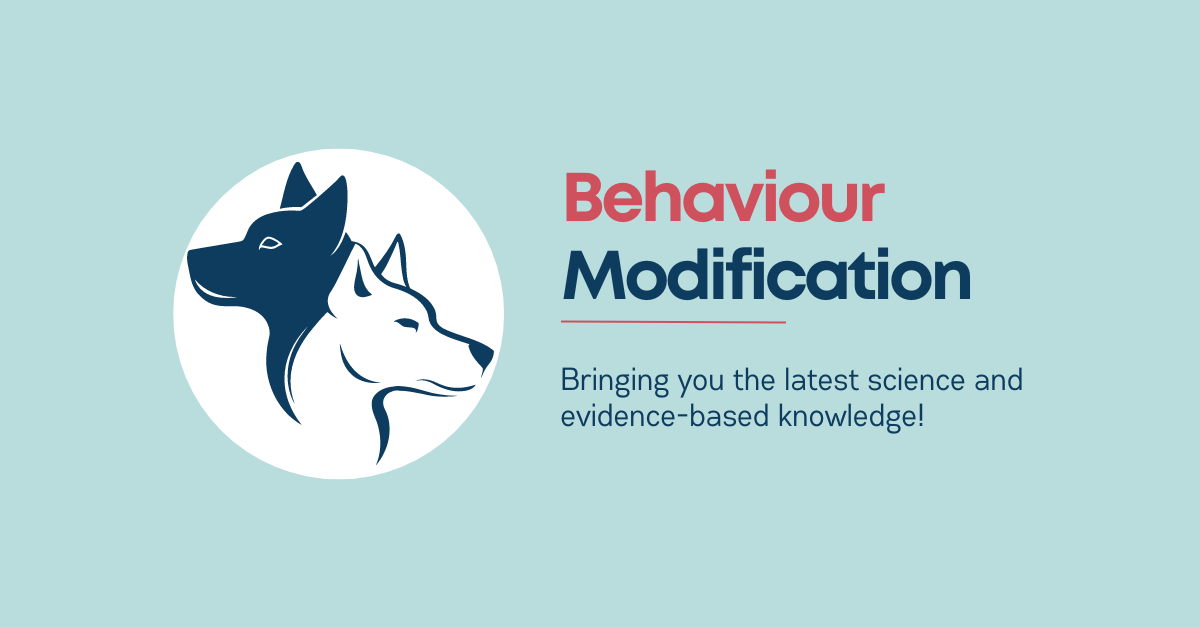Understanding Barking and Howling in Dogs
Barking and howling are natural ways for dogs to communicate their needs, emotions, and alert their owners to potential dangers. While these behaviors are normal, excessive barking or howling can be problematic, impacting not only the owner but also neighbors. In environments where dogs interact with one another, such as doggy daycares, dog boarding facilities, or board and train programs, managing excessive vocalization is particularly crucial. An anxious dog can heighten stress among other dogs, leading to a ripple effect of anxiety.
Understanding the underlying causes of excessive barking or howling is key to finding effective solutions. Our guide explores why dogs bark or howl excessively, the impact on their surroundings, and strategies to manage the noise. For more detailed advice on selecting the right doggy daycare, dog boarding, or board and train facility—ensuring a positive environment where handlers are responsible for their dog’s well-being—please refer to our comprehensive guide on choosing an appropriate facility for your dog.
Reasons for Dog Barking or Howling
Before addressing the barking or howling issue, it’s crucial to understand the reasons behind your dog’s vocalisations. Dogs are social animals and barking or howling is an important form of communication, can stem from various motivations, including:
- Lack of Stimulation: Dogs are intelligent and social creatures that require mental and physical activities. If they’re under-stimulated, vocalising can become a secondary occupation.
- Separation Anxiety: When left alone, some dogs experience intense anxiety, leading to destructive behaviour and, you guessed it, incessant barking or howling (when left alone).
For more information on this condition, do check out our article on what is separation anxiety in dogs! - Frustration: If your departure marks the end of a fun game or a day at the park, your pet might express its frustration through a series of loud barks or ear-piercing howls.
- Boredom: A bored dog is a creative dog, a maxim that can manifest in the form of barking or howling, especially when left to their own devices for extended periods.
- Fear and Uncertainty: Dogs may vocalise to scare away perceived threats or intruders.
- Attention Seeking: Some dogs bark and howl to gain attention from their owners or to communicate their needs.
- Alarm or Alert: These behaviours can serve as a warning signal to alert their owners of potential dangers or unusual activities.
- Excitement Dogs may vocalise when they are excited, such as during playtime or when anticipating a walk.

Understanding dog behaviour
Understanding behaviours and linking them to a specific root cause serves as an initial step, and this requires a fundamental understanding of dog body language.
Professionals, with their extensive experience in interpreting dog body language, can provide more accurate assessments based on their past encounters with a variety of dogs. Therefore, engaging a professional dog training service is advised if you’re unsure about the root cause of your dogs vocalisations.
In the Singapore dog training industry, the responsibility to find and engage a reputable dog trainer or training service falls on the pet owners. The following sections will give you a clear understanding of what to look out for, enabling you to productively discuss and engage with your dog trainer.
Figuring out what causes excessive barking or howling
Before putting on your behaviour change cap, we should undertake a few preliminary checks that can help pinpoint the triggers of your dog’s excessive vocalisations:
- Increasing Stimulation: A sufficiently stimulated dog that receives enough exercise and play is unlikely to bark or howl excessively if the root cause of the vocalisation was under-stimulation. Providing a variety of chew toys can help to reduce vocalisations due to boredom.
- Check if it Could be Separation-related: Observe if your dog vocalises only when you’re away from home. If this is the case, it may indicate a separation anxiety-related issue.
- Remove the Trigger: If it’s a specific trigger that you suspect your dog is reacting to, try removing the trigger from its environment.
- Chew Time: Providing a variety of chew toys can help to reduce boredom barking or howling.
- Assess for Fear: Observe your dog’s reactions to passersby. If barking or howling occurs only when people walk by, your dog may be fearful of strangers and is vocalising in attempts to remove the ‘threat’.
- Assessing Attention-Seeking: To determine if the vocalisation is for attention, check if your dog’s basic needs are fulfilled first. If they are, observe if the vocalisations persists if you ignore it or walk away.
- Excitement: Monitor the arousal state of your dog and see if the bark or howl only occurs during highly arousing situations. If yes, the trigger for the vocalisations could be due to excitement or anticipation of an exciting event, such as a walk.
By understanding these specific reasons for barking and howling, you can document the scenarios that results in the vocalisations. This would help you or an animal behaviourist narrow down the explicit root cause that is resulting in the behaviour and craft tailored programs to help the dog stop vocalising.
Planning and Implementing Mitigation Strategies
Identifying the root cause is key. Tailoring a plan, like a training routine for separation anxiety or providing interactive toys to address boredom, can greatly help your dog. Protocols for vocalisation issues are customised based on history and context, and treatment can range from simple to complex, depending on the cause. In general, the subsequent steps are what we should follow.
1. Assessment
The first step in managing excessive barking or howling involves a thorough assessment. This includes gathering detailed history about the dog’s behaviour patterns, health status, and any past training or interventions. An understanding of the owner’s lifestyle is equally important, as it can influence the dog’s routine and emotional well-being. For instance, a dog in a busy household with multiple people coming and going may have different triggers than a dog in a quiet, solitary environment.
2. Applying the Protocol
Once a comprehensive assessment is completed, the next step is to apply a tailored protocol that suits both the owner’s lifestyle and the dog’s history. This plan should be designed to address the specific triggers identified during the assessment phase. Whether it’s through increasing physical activity, providing mental stimulation, or specific training techniques, the protocol must be realistic and manageable for the owner to implement consistently.
3. Monitor and Fine-tune
Behaviour is variable and influenced by numerous factors such as changes in routine, environment, and even the dog’s health. Therefore, it is crucial to closely monitor the dog’s response to the implemented protocol. Regular check-ins and observations will help identify what works and what needs adjustment. Fine-tuning the strategies based on these observations ensures the approach remains effective and responsive to the dog’s needs.
4. Maintenance
Once the excessive barking or howling is under control, the focus shifts to maintenance. This involves ensuring that the dog does not develop vocalisation issues due to new or previously unnoticed triggers. Regularly reviewing the dog’s environment, routine, and emotional state helps in early identification of potential issues. Consistent preventive measures are crucial as they reinforce positive behaviour and help maintain a peaceful coexistence, underscoring the adage that prevention is better than cure.
Examples of Root Causes and Applied Protocols
When dealing with excessive barking or howling, a one-size-fits-all approach is seldom effective. It’s essential to understand that these examples serve as general guidelines, and any final protocol must be specific to the dog’s history and the owner’s lifestyle.
Example 1: Separation Anxiety
- Root Cause: A dog that vocalises excessively when left alone may be experiencing separation anxiety.
- Protocol: Gradual desensitisation and counter-conditioning are key. Start with short departures, gradually increasing the duration as the dog becomes more comfortable.
Separation Anxiety is often misunderstood and mistakenly addressed, leading to prolonged issues that could otherwise be resolved. Given its complexity and prevalence, we’ve dedicated a separate section to discuss effective strategies for addressing Separation Anxiety later in this article.
Example 2: Fear of Strangers
- Root Cause: A dog vocalising at passersby through a window might be fearful of strangers.
- Protocol: Introducing desensitisation techniques involves exposing the dog to the trigger at a distance where the dog remains calm and rewarding the dog for halting the behaviour. Over time, decrease the distance to the trigger slowly and continue to reward calm behaviour. Blocking the view with curtains or frosted windows can also help manage initial reactions.
Example 3: Boredom or Under-Stimulation
- Root Cause: Excessive barking or howling due to boredom often occurs when dogs are not receiving sufficient physical and mental stimulation.
- Protocol: Increasing the amount of daily exercise and incorporating more mentally stimulating activities like training sessions or interactive play can greatly reduce the behaviour. Providing a variety of chew toys and interactive feeders can also keep the dog engaged when left alone.
Example 4: Attention-Seeking Behaviours
- Root Cause: Dogs may bark or howl to gain attention from their owners.
- Protocol: Ignore the vocalisations and only give attention when the dog is quiet. Consistency is key, as mixed messages can confuse the dog. Ensuring the dog’s basic needs are met and reinforcing quiet behaviour with treats or affection when the dog is calm will help to establish clear expectations.
Example 5: Reactivity to Noise
- Root Cause: Some dogs may bark or howl excessively at specific noises such as doorbells or traffic.
- Protocol: Play recordings of the triggering noises at a low volume and reward the dog for remaining calm. Gradually increase the volume as the dog becomes desensitised. Creating a “safe space” for the dog in a quieter part of the home can also help.
These examples highlight that while there are common strategies to address excessive barking, the effectiveness of any protocol heavily depends on tailoring it to fit the unique circumstances of the dog and its owner. Consulting with a professional trainer or behaviourist is often the best approach to designing an effective, comprehensive plan.
Separation Anxiety
In some cases, your behaviourist might diagnose your dog with separation anxiety – a condition that is relatively more severe. For these cases, careful analysis specific to the dog would be required. These includes assessing pre-departure cues, level of threshold for the dog and whether the separation anxiety is specific to the owner or generalised for all humans.

Separation anxiety in dogs is a complex issue characterised by your dog feeling anxious and displaying stress-related behaviours when left alone. To feel secure, they need the owners to come back and be present. These behaviours may start as early as when you reach the door or after several minutes of leaving the room. One common stress-related behaviour is excessive barking or howling when left alone. Dogs with separation anxiety may feel insecure and highly stressed until their owner returns, sometimes vocalising incessantly throughout the absence, disturbing the neighbourhood peace.
If your dog has separation anxiety, training methods like crate training and chew toy may not work and could worsen the condition. Preventing stress buildup is key, with support from family or friends to avoid triggers.
Investing in a professional training program tailored to your dog’s needs, specifically a systematic fear-based desensitisation protocol for separation anxiety, applied by a Certified Separation Anxiety Trainer (CSAT) specialist, can fast-track the behavioural changes you seek and prevent the condition from worsening. Especially if your dog is suffering from complex conditions such as separation anxiety, it’s essential that you work with a professional behaviourist on a structured approach that ensures long-term success.
Pet Coach SG specialises in assessing and implementing desensitisation protocols to fix separation anxiety. If you suspect that your dog has separation anxiety, do reach out to our CSAT specialist understand further how we can treat separation anxiety in dogs!
Common Pitfalls
In this section, we will describe several incorrect actions that might be undertaken by well-meaning individuals. With this list, we hope to shortcut the guesswork for you so that you don’t repeat the same mistakes and can expedite the resolution to your dog’s barking or howling problem.

Ignoring the problem
A common belief advises letting a dog bark until tired to release its pent-up energy. However, this approach assumes that barking fulfils the dog’s needs, is untrue. For instance, if a dog barks or howls out of frustration, assuming the vocalisation relieves it is not accurate. Similarly, if the vocalisations is due to anxiety, assuming that the behaviour alleviates anxiety and results in a calm dog is inaccurate.
Instead of ignoring the problem, we should understand the root cause to fix it. This would maximise the chances of resolving the excessive dog barking or howling issue appropriately.
Punishing the dog
Punishing a dog using aversive behaviour modification techniques may not deter the undesired behaviour, especially if it is motivated by fear. Understanding the underlying cause is crucial. For instance, punishing a fear-induced bark or howl could escalate fear levels and worsen behaviour issues, potentially leading to increased intensity of the behaviour and the development of other unwanted behaviours.
Moreover, if a dog vocalises for attention, punishing it can inadvertently reinforce the behaviour by granting attention. For effective punishment, the aversive impact must outweigh the perceived reward of attention. If the perceived reward is high, the punishment must be severe, potentially risking harm and straining the dog-owner relationship.
Instead of punishing the dog, we would recommend for an owner to understand the reasons for the barking issue. Once that is clear, there are more effective training techniques that can be applied (without punishment), to resolve the excessive barking or howling issue effectively.
Over-reliance on quick fixes without understanding the root cause
Puzzle toys and chews can address excessive vocalisations in dogs caused by boredom or frustration. However, addressing only the symptoms without understanding the root cause may lead to dependency on your presence for a solution. For example, these quick fixes will not resolve anxiety caused by separation anxiety, potentially exacerbating the issue.
Understanding these common pitfalls is the first step toward developing a more effective, compassionate approach to training and resolving excessive barking or howling in dogs. Remember, patience and consistency are key in modifying any behavioural issue. By investing the time and effort to understand it and working with a professional, you can help your dog overcome its excessive barking and improve its overall well-being. Your dog will thank you for it!
Conclusion
Dog behaviour and training is an art and science. Consider pet’s persona, history, and environment. Be patient, adaptable, prioritise well-being. Use prevention, management, treatment strategies and seek professional help when needed. There are behaviour modification techniques and protocols that have been proven to work multiple times across different scenarios.
Applying the behaviour modification techniques and training protocols correctly and effectively will maximise the chances of success. In doing so, we can address excessive barking effectively. It’s a rewarding experience when you have successfully achieved a common goal with your furry companion, and it strengthens the bond between the dog and its owner as well. If you need more information regarding the services that we provide, do check our dog training services! Otherwise, all the best in your journey with your furry companion, we will always be a button click away, ready to assist you if the need ever arises.








